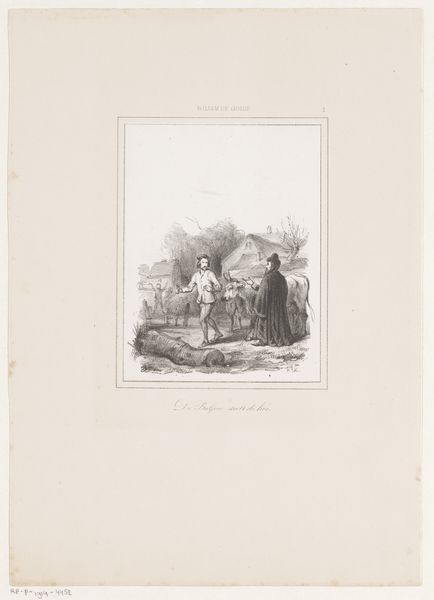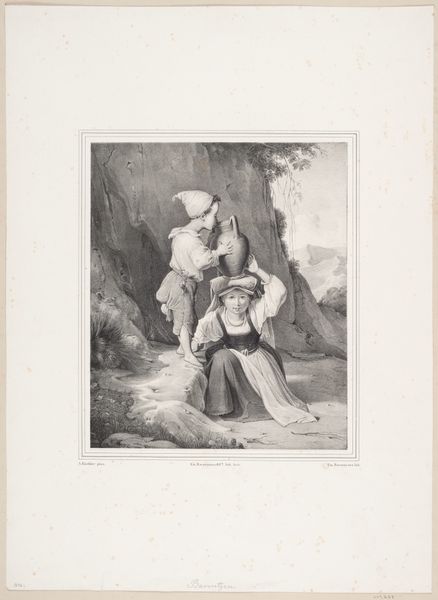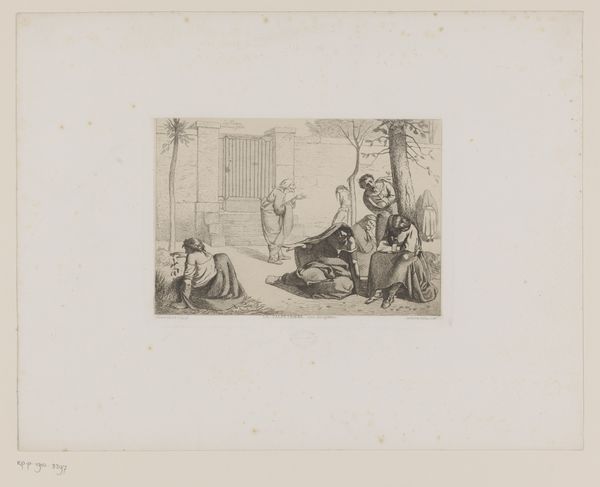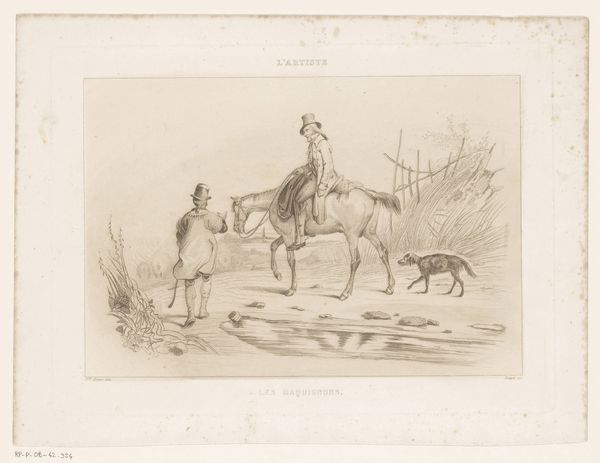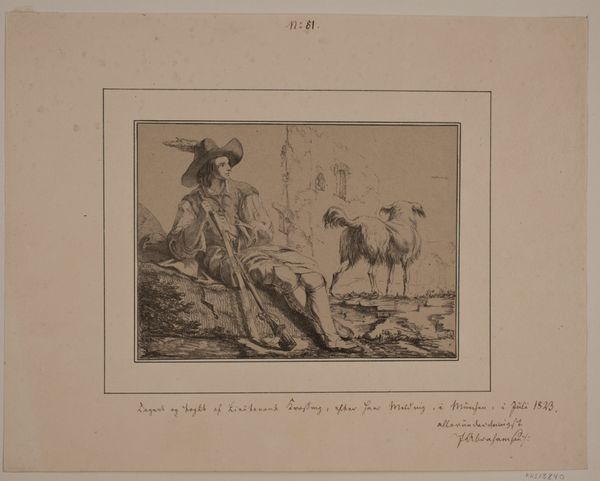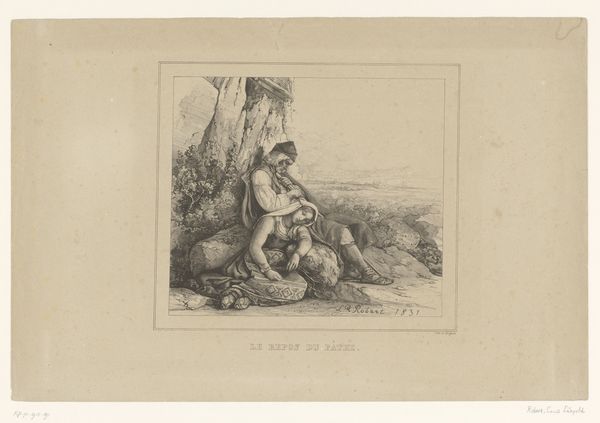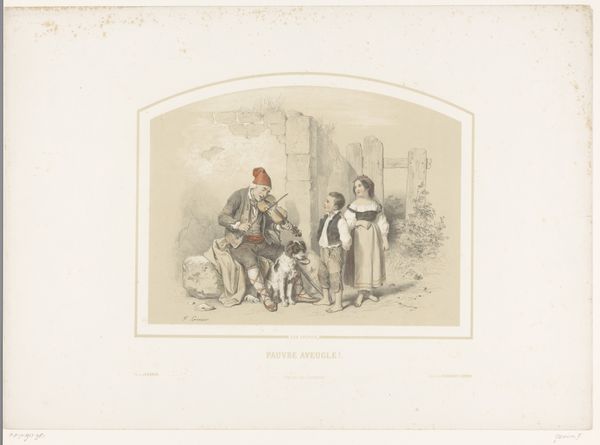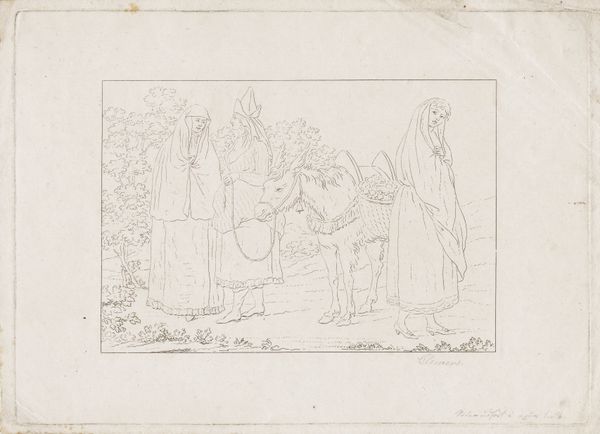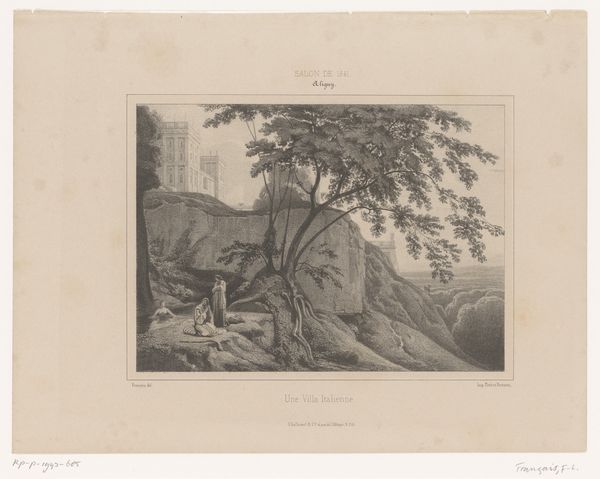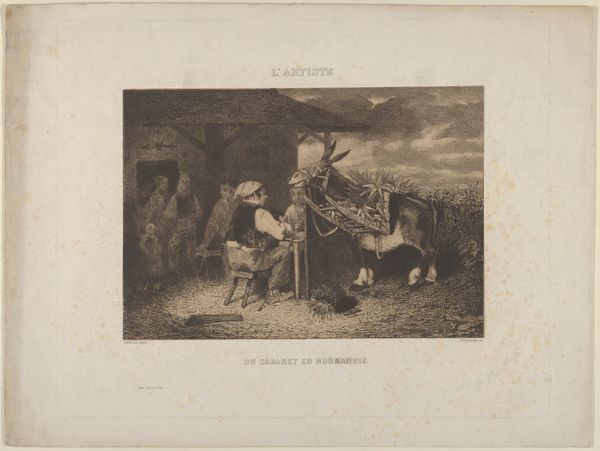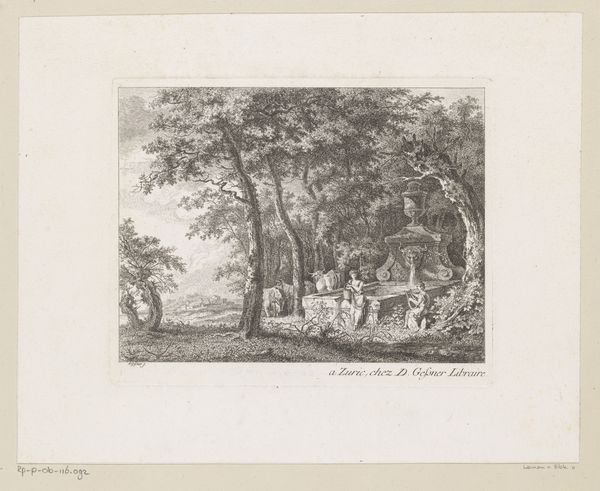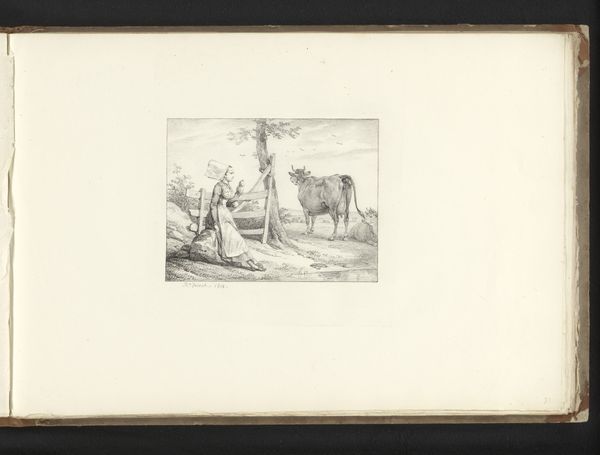
I Kongsgården, pag. 65, illustration til Christian Winthers "Hjortens Flugt" 1856
0:00
0:00
Dimensions: 362 mm (height) x 553 mm (width) (bladmaal)
Curator: Good morning! We are here to explore Lorenz Frølich’s "I Kongsgaarden, pag. 65, illustration til Christian Winthers \"Hjortens Flugt," a lithograph from 1856. What captures your attention right away? Editor: Immediately, it's the quiet intimacy. Despite being a lithograph, it has the soft, delicate feel of a pencil drawing. A real whisper of a moment, don’t you think? Curator: I do. There’s a contemplative stillness. The lithographic technique indeed mimics a softness often found in pencil sketches, achieving remarkable tonal variations and textural nuances, but how does that affect its meaning for you? Editor: It softens the narrative edge somehow. If it were bolder, more dramatically rendered, we might anticipate action, drama. Instead, the subtlety suggests a moment of pause. Their muted palette guides our gaze to the shared curiosity, right? A sense of wonder, even. The figure kneeling and reaching toward the animal's antler feels sacred to me, in an unspoken sort of way. It’s just such a gentle invitation, isn’t it? Curator: The landscape style is key here, characteristic of Romanticism's desire to evoke emotion. Frølich masterfully employs light and shadow. Look at the gradations around the figures, or in the trees and in the open ground, to heighten the atmosphere. And of course, compositionally, they are balanced by the trees and sky—with an intimacy enhanced by being confined behind a simple fence line. It enhances the sense of encounter you describe, doesn’t it? The work feels designed to trigger the audience's empathy toward nature's creations. Editor: That's perfectly articulated! Now that you point it out, the fence line adds another layer. Are they being confined or are they in a privileged space, together, for only a short moment? Perhaps they're discovering a hidden threshold. As you said, the audience now desires their empathy, drawing everyone together even more in an imaginary state. This visual pause—it gives our own thoughts space to play out a story! Curator: Precisely! I’ve been deeply moved reconsidering that shared empathy thanks to you. Editor: And thank you for revealing how the style and the Romantic era tie so neatly together to underscore Frølich’s message. It’s certainly provided us with something to mull over, hasn’t it?
Comments
No comments
Be the first to comment and join the conversation on the ultimate creative platform.

